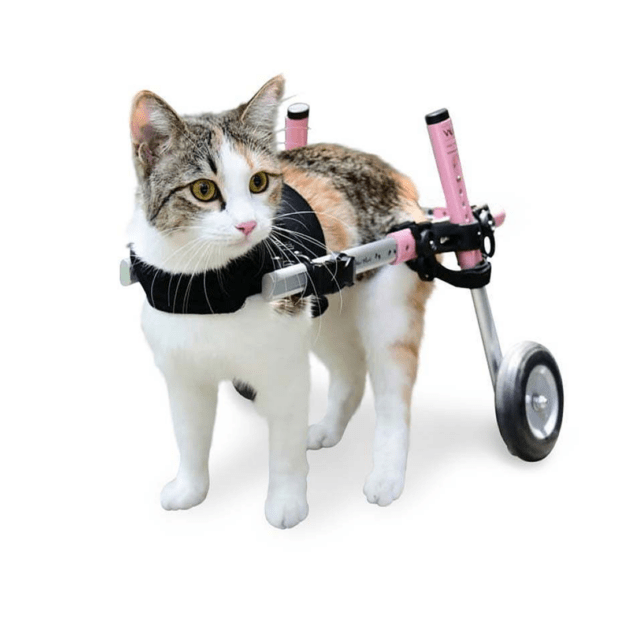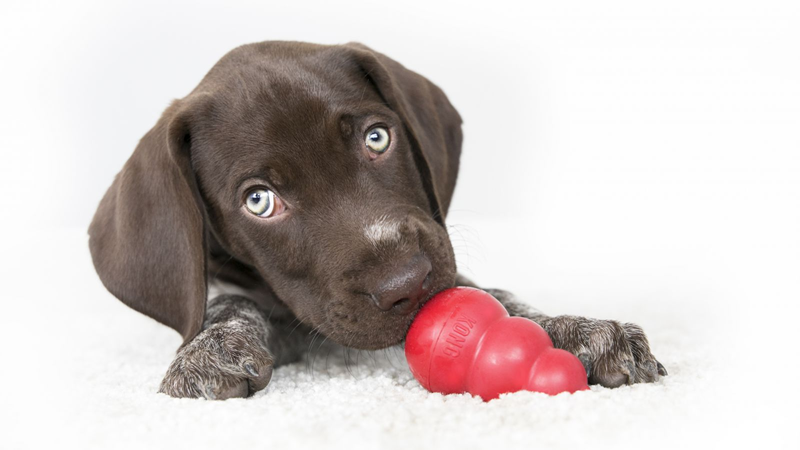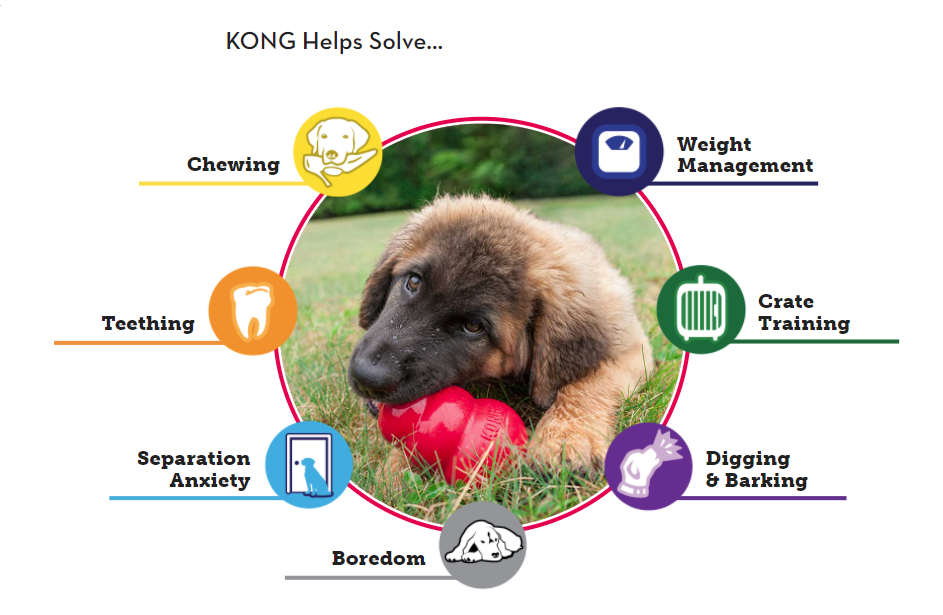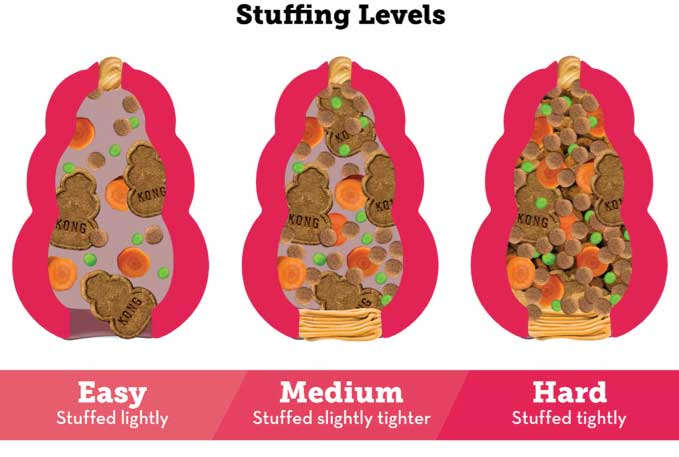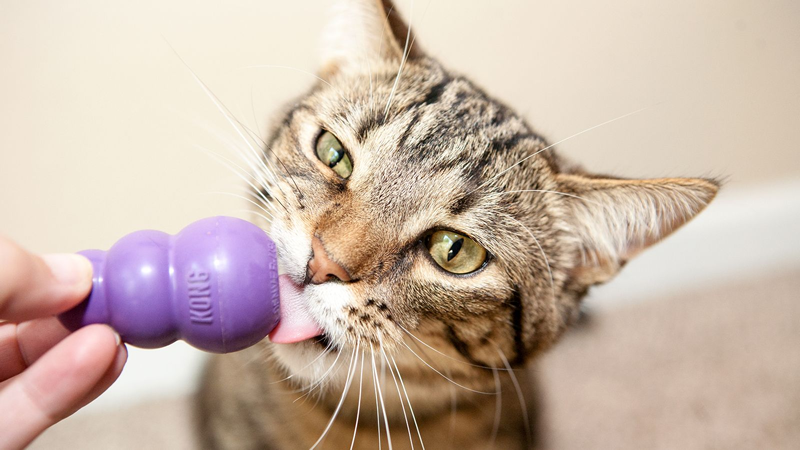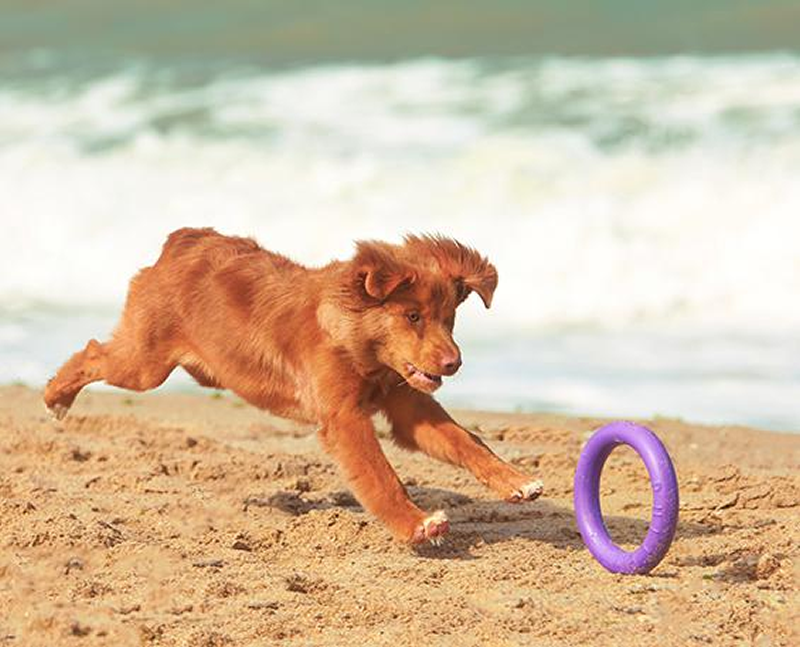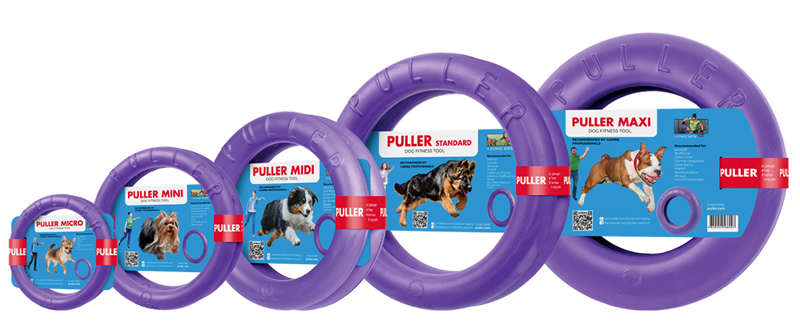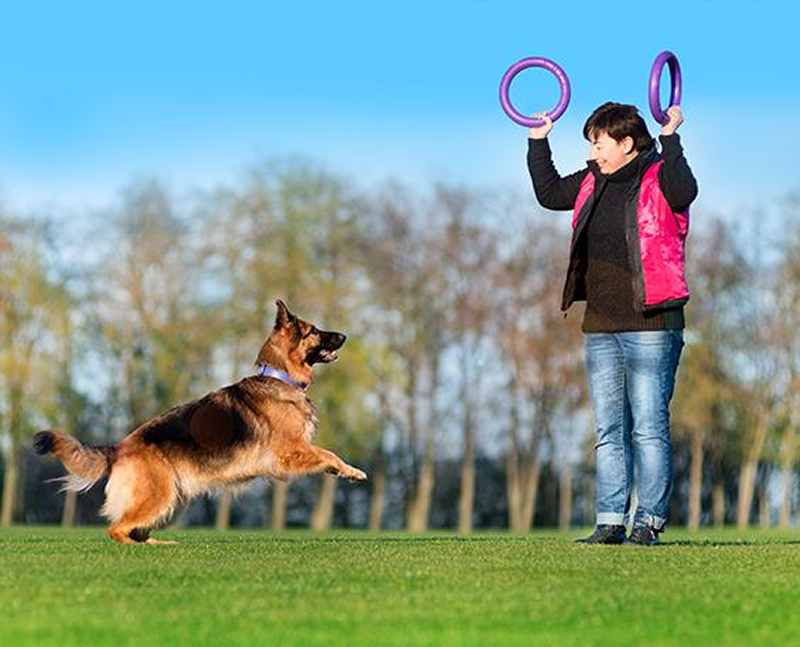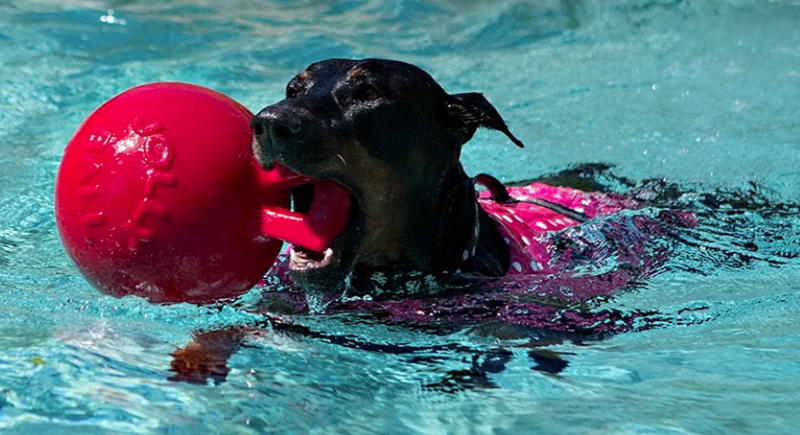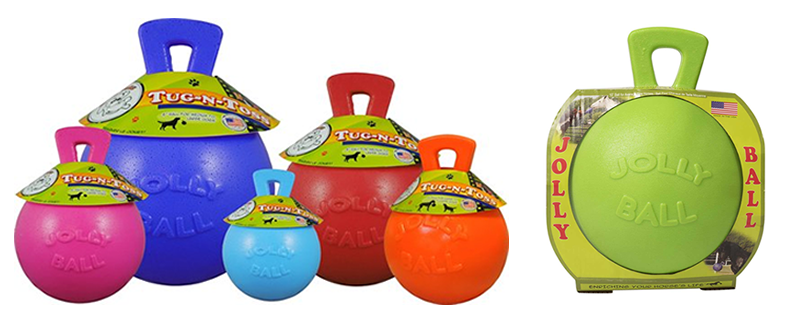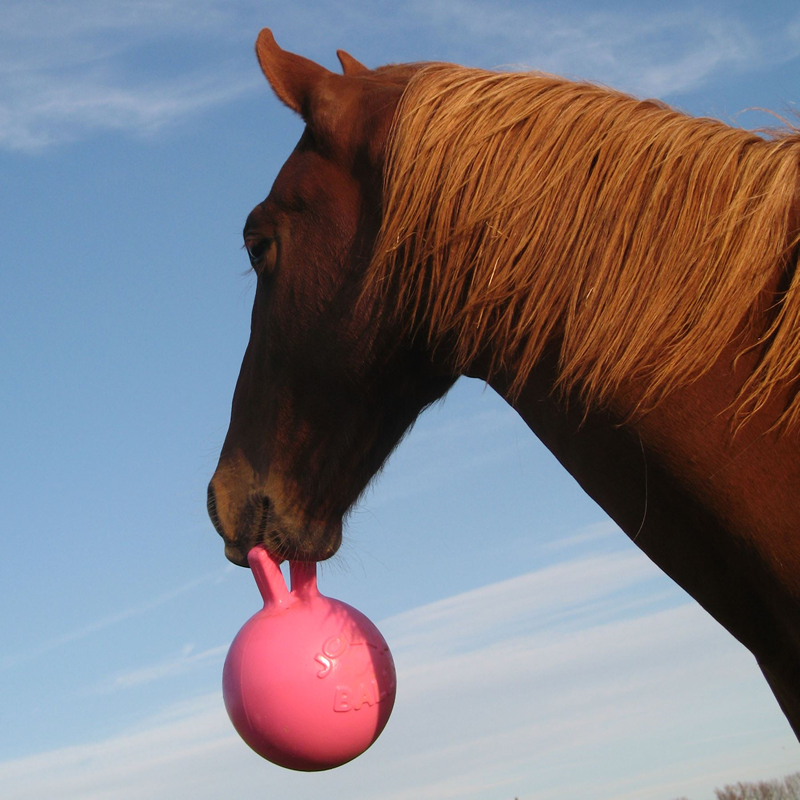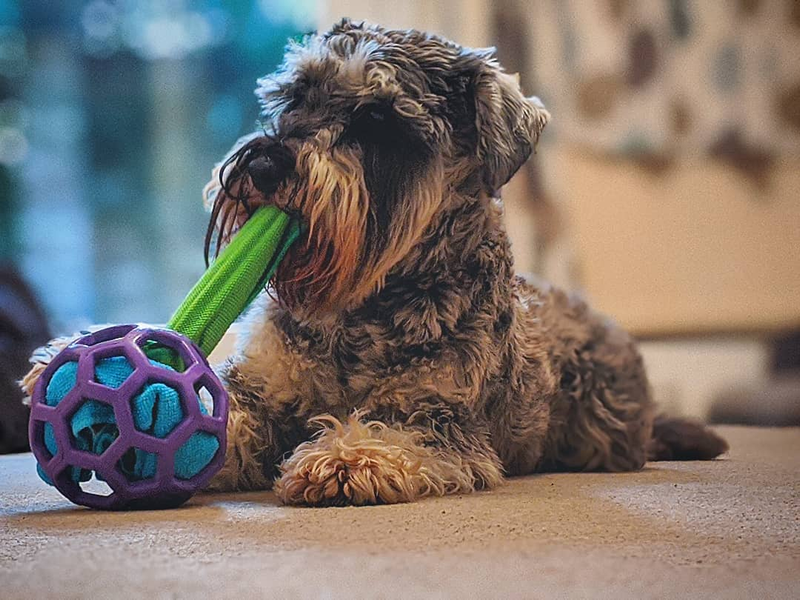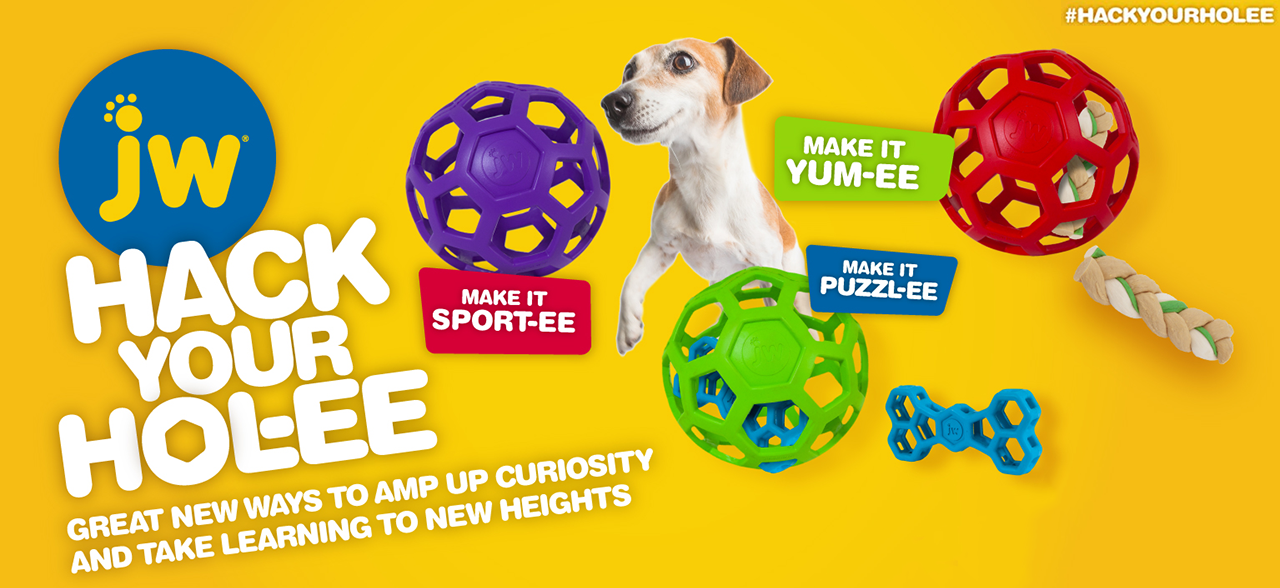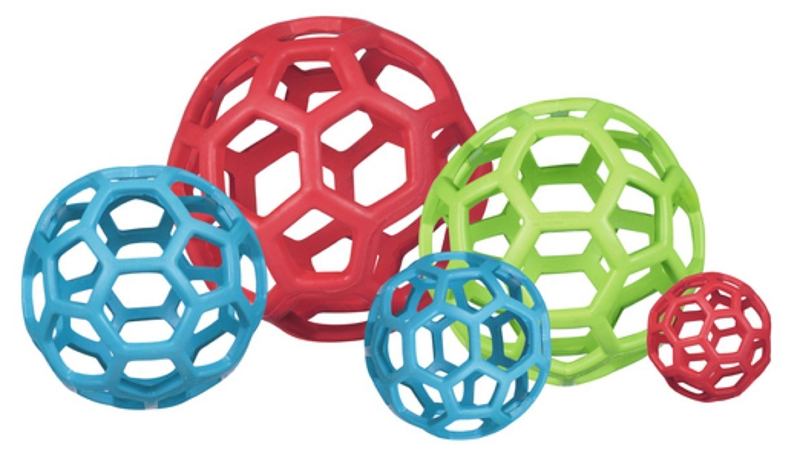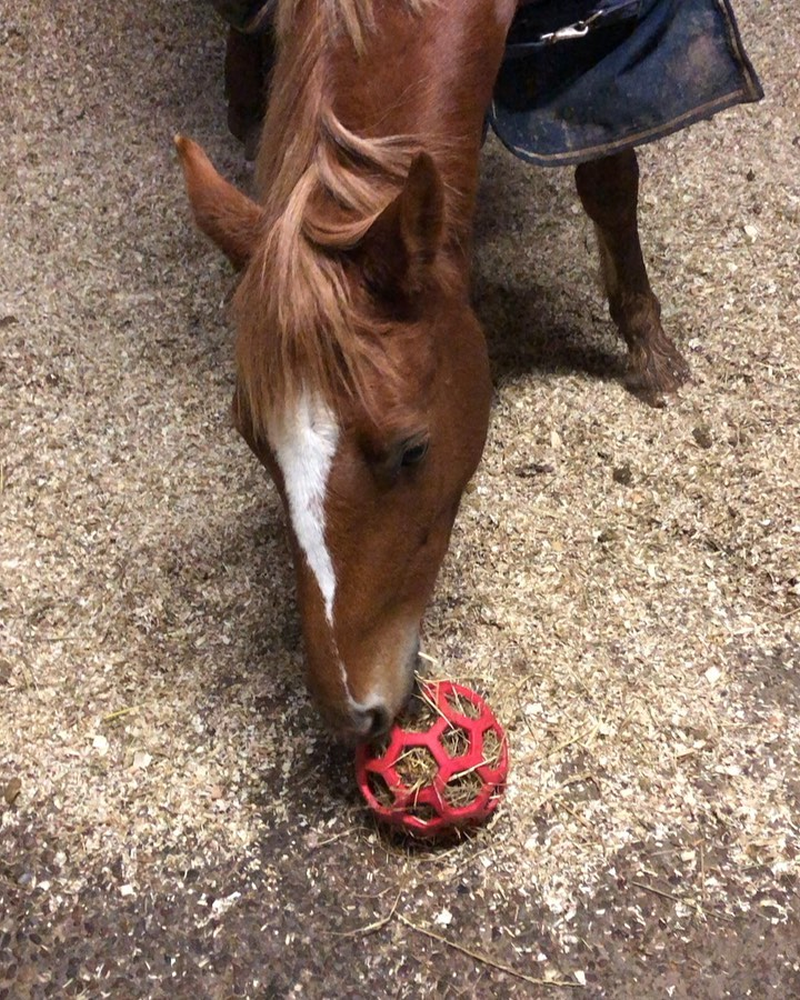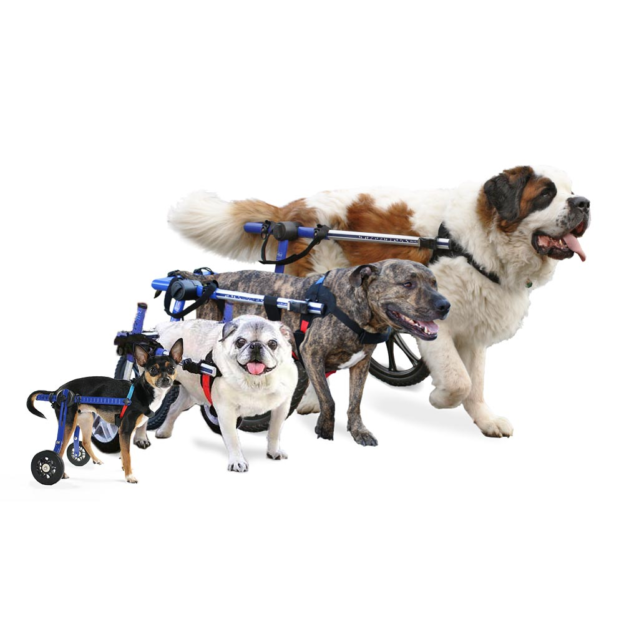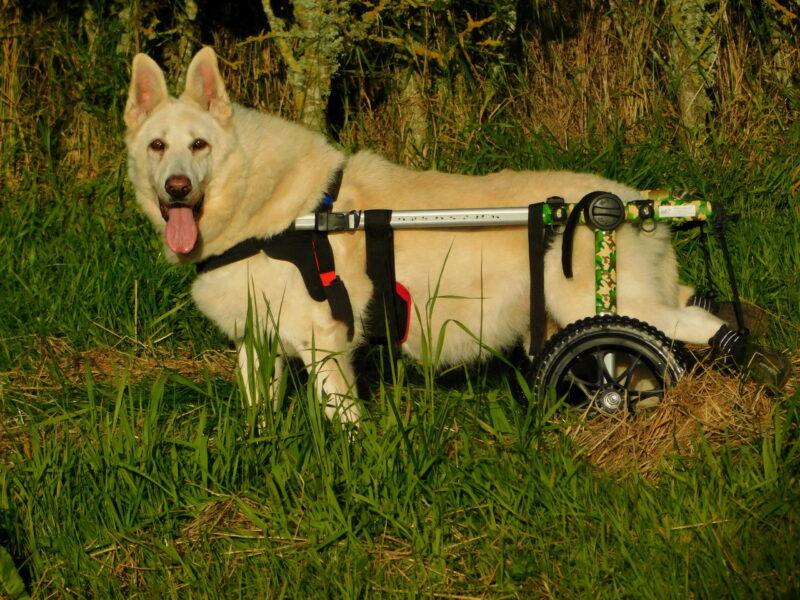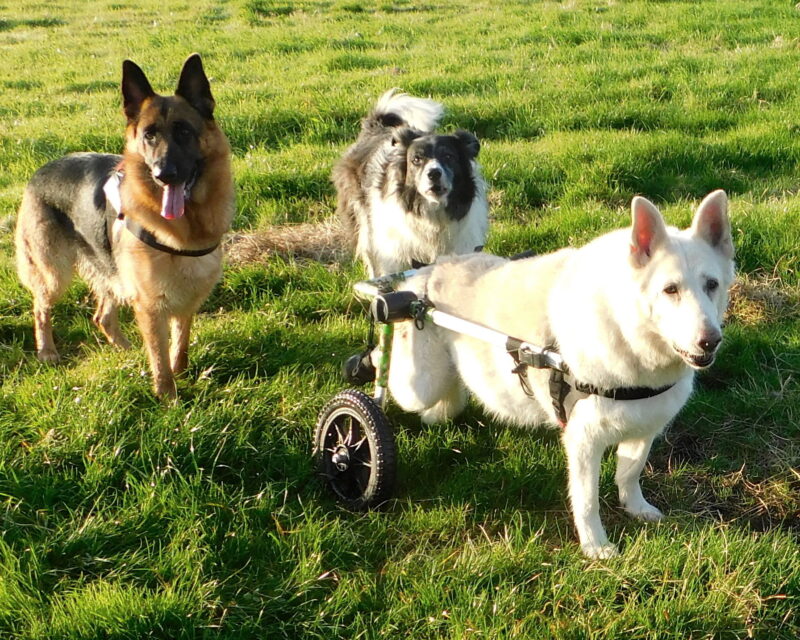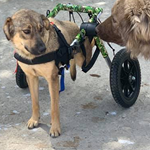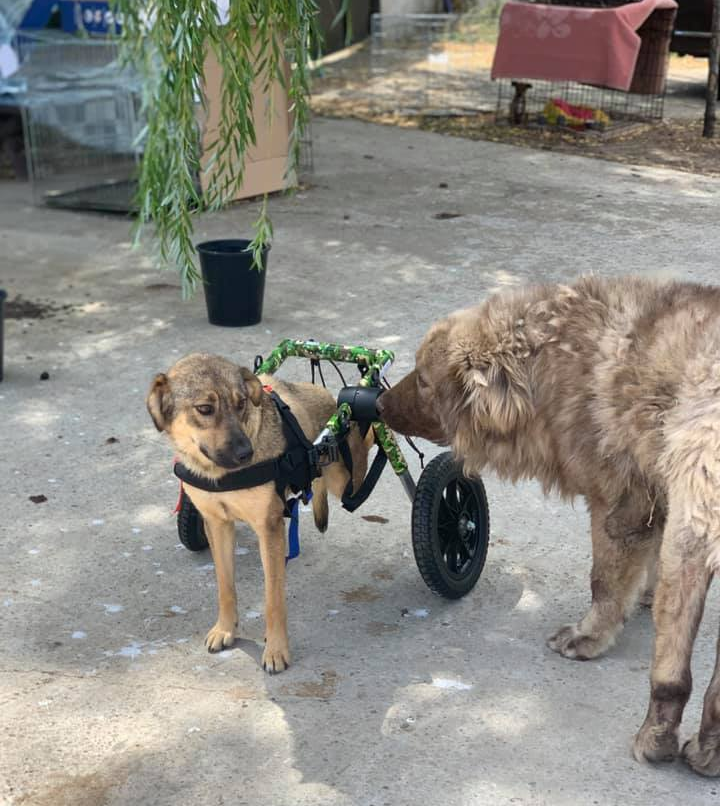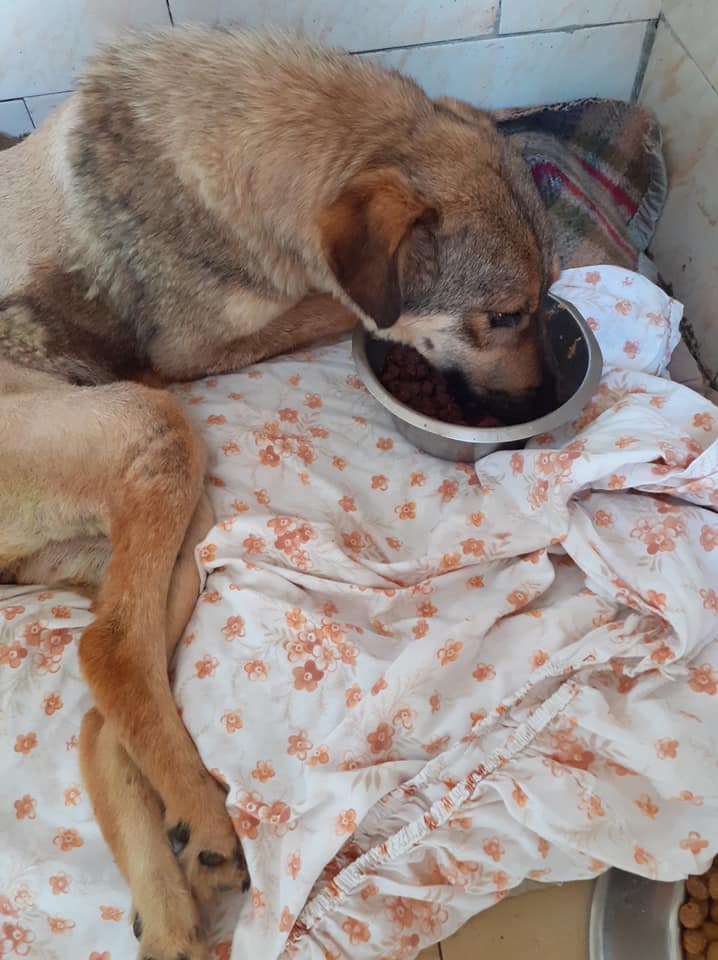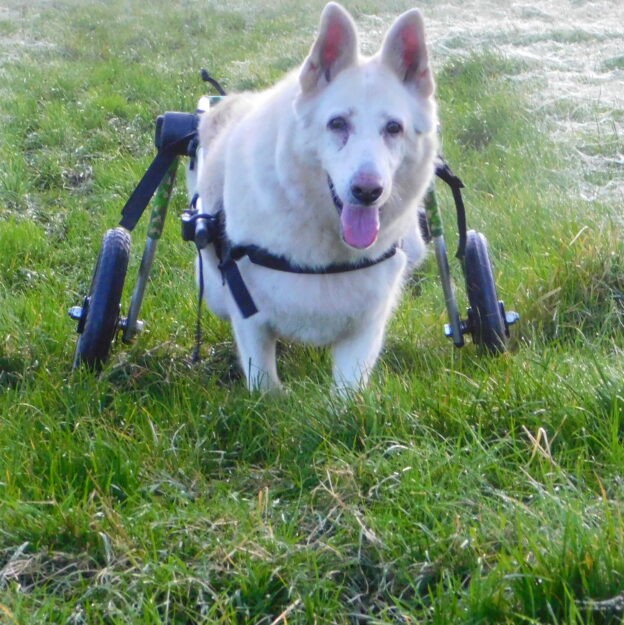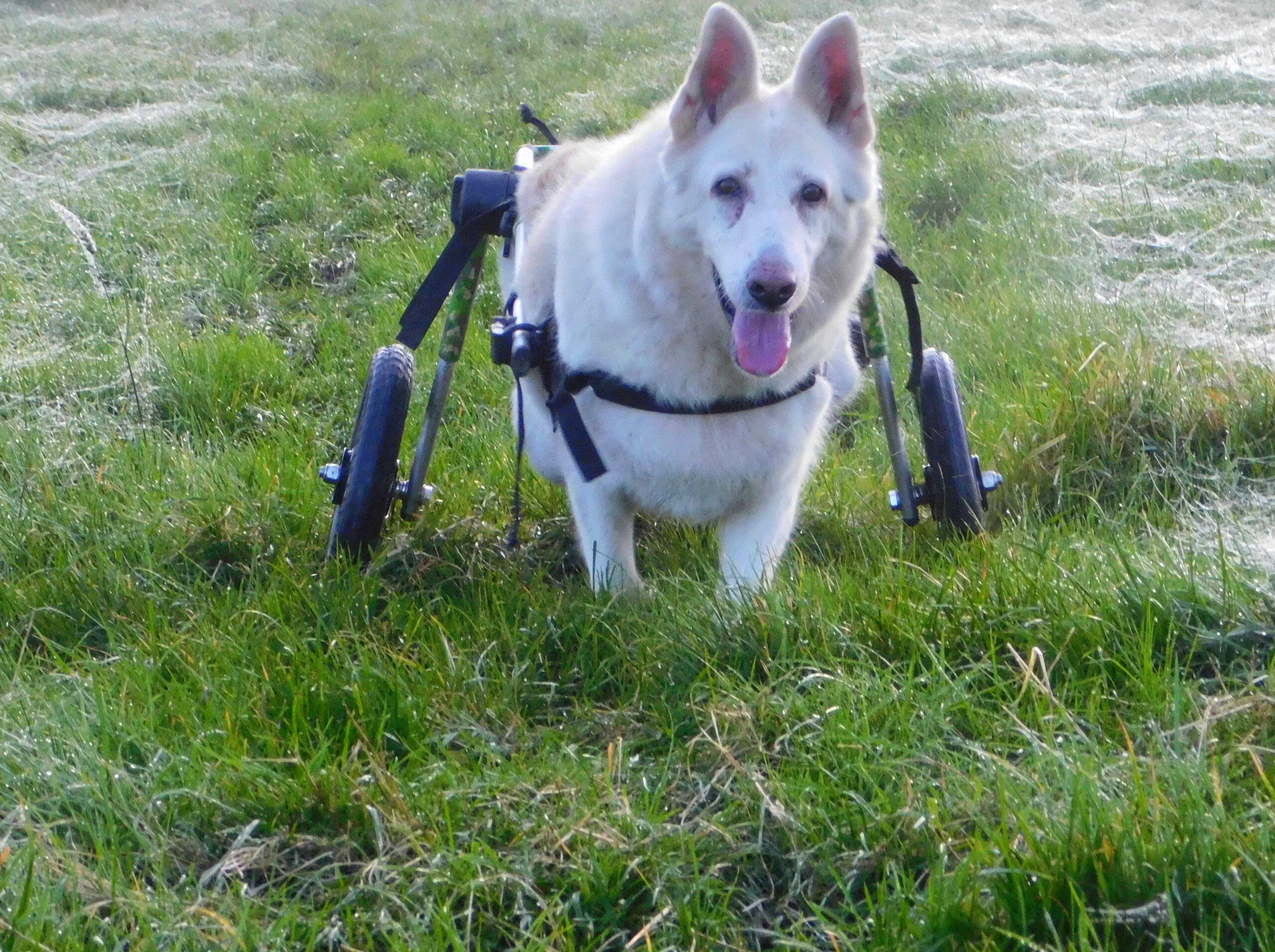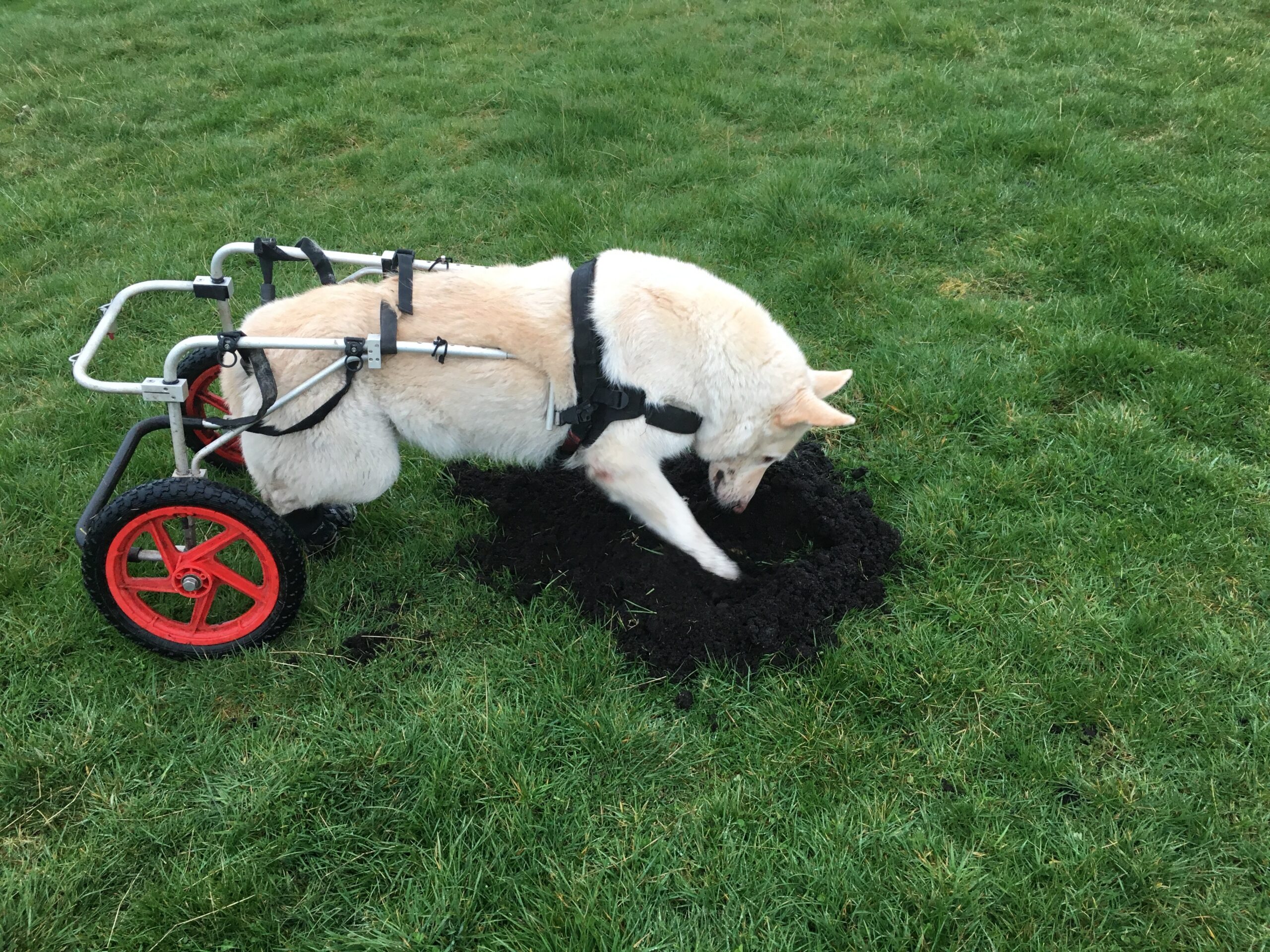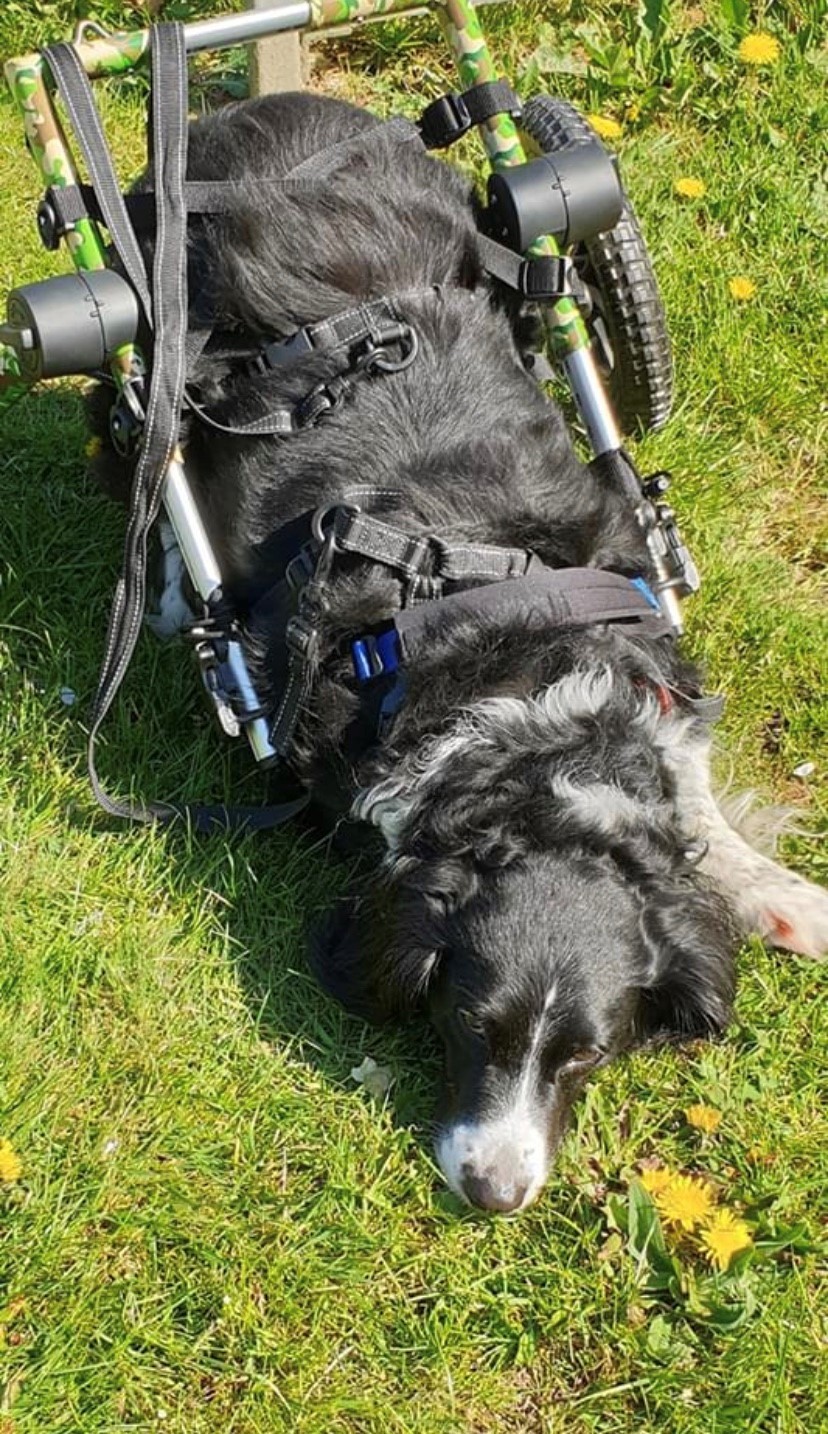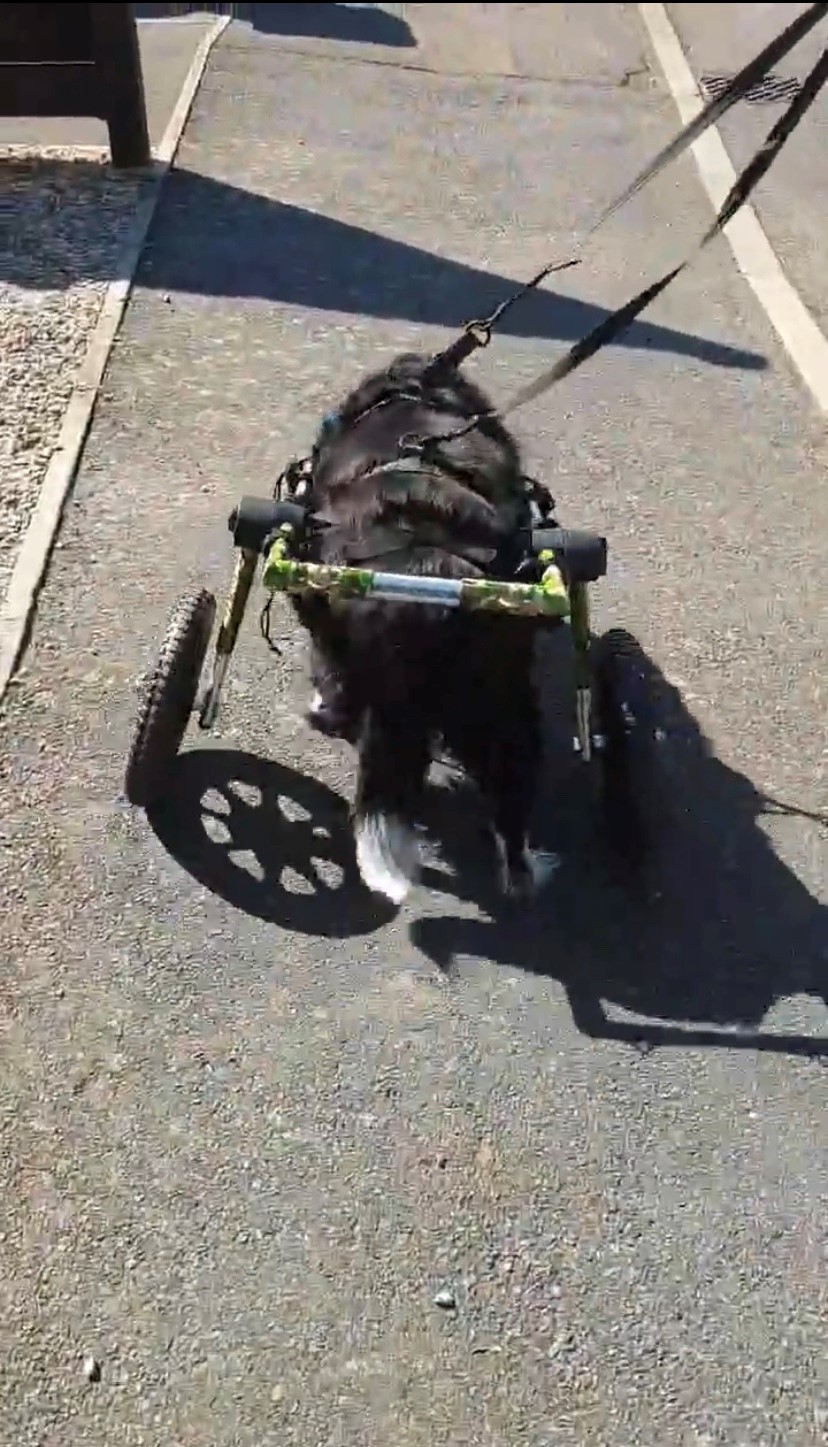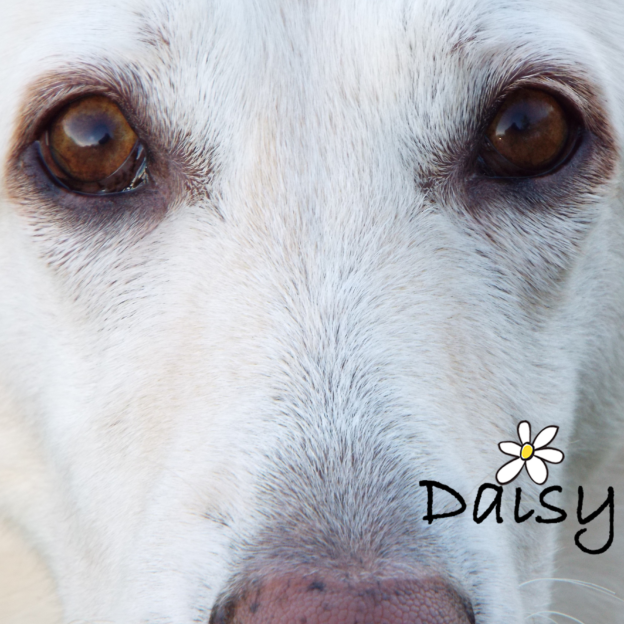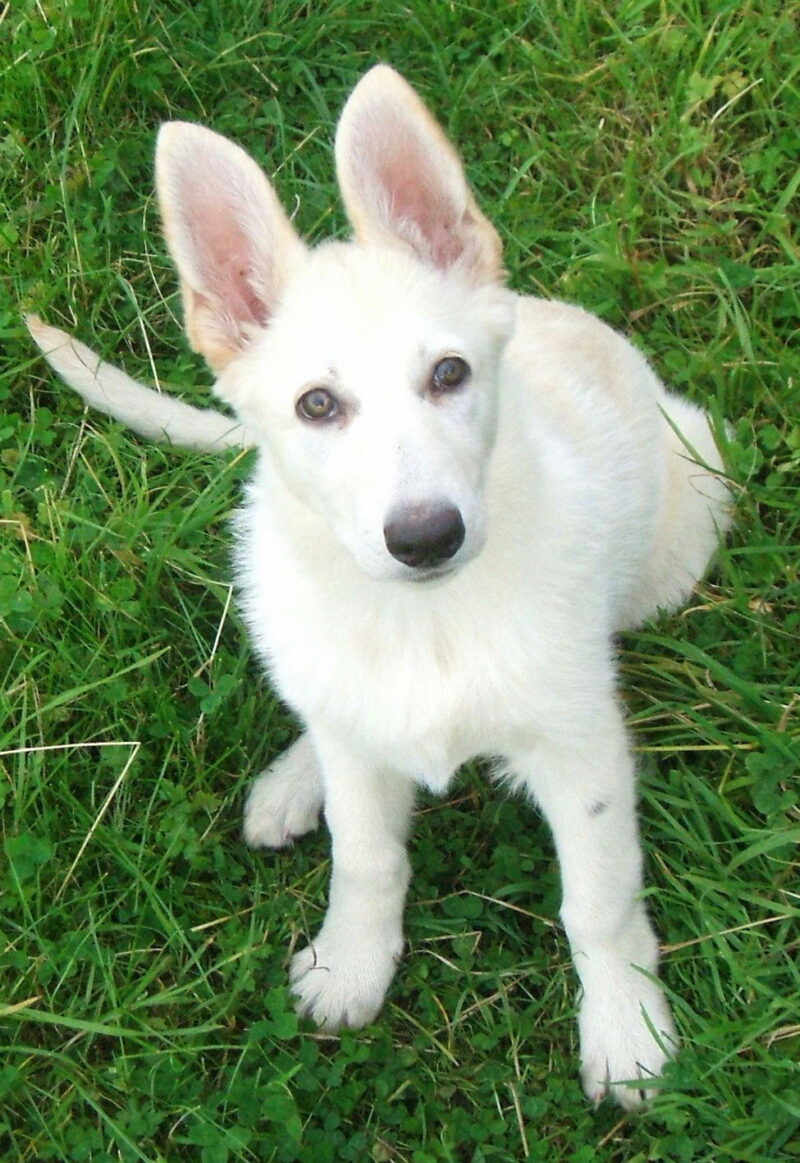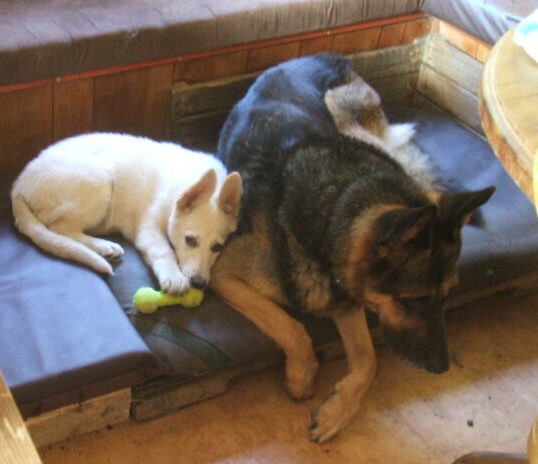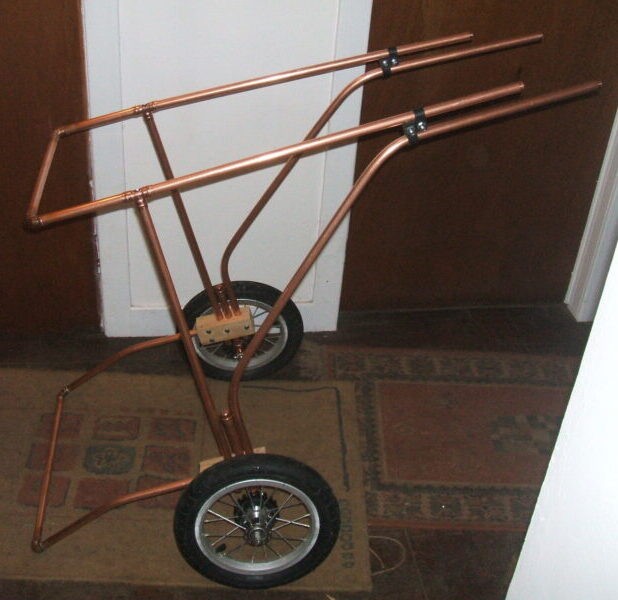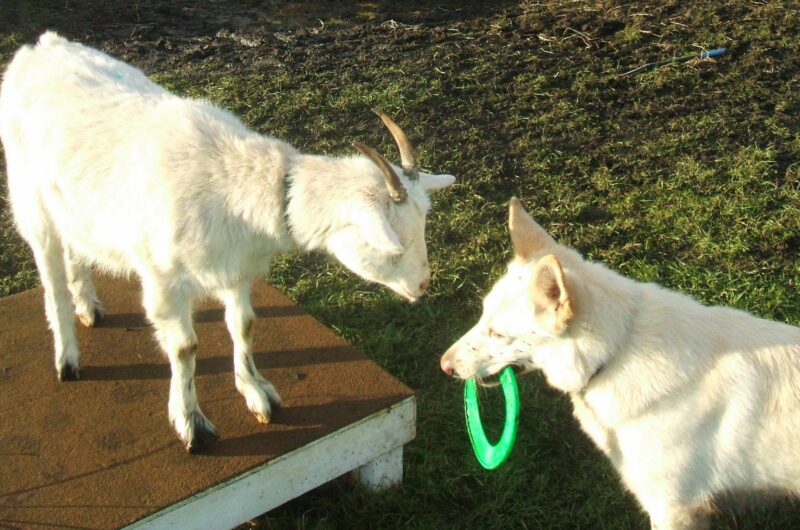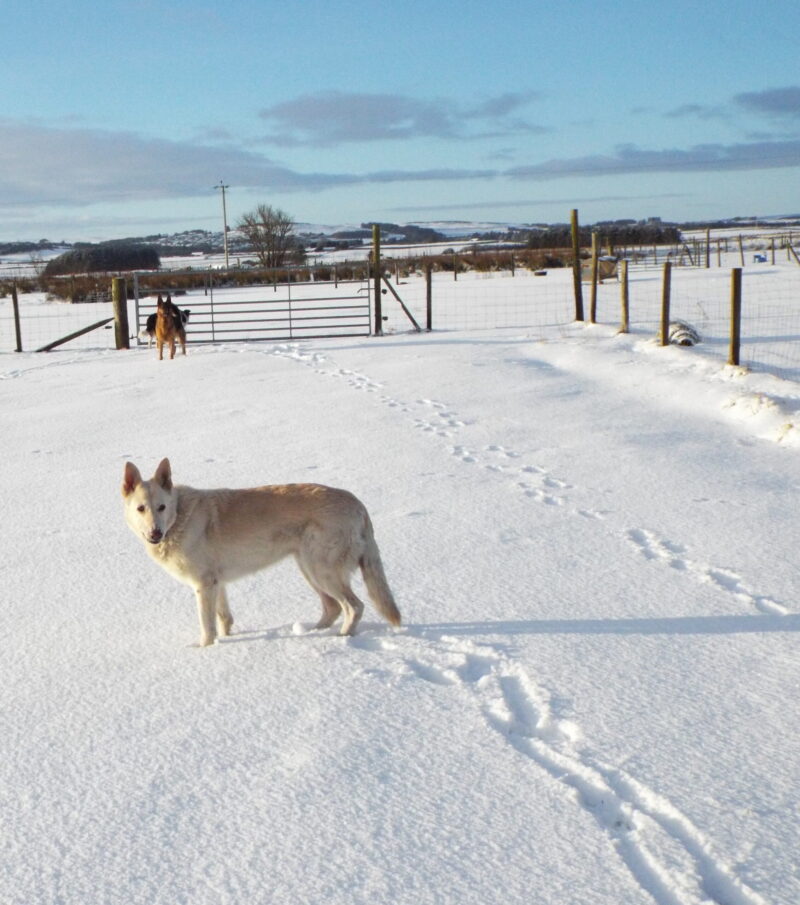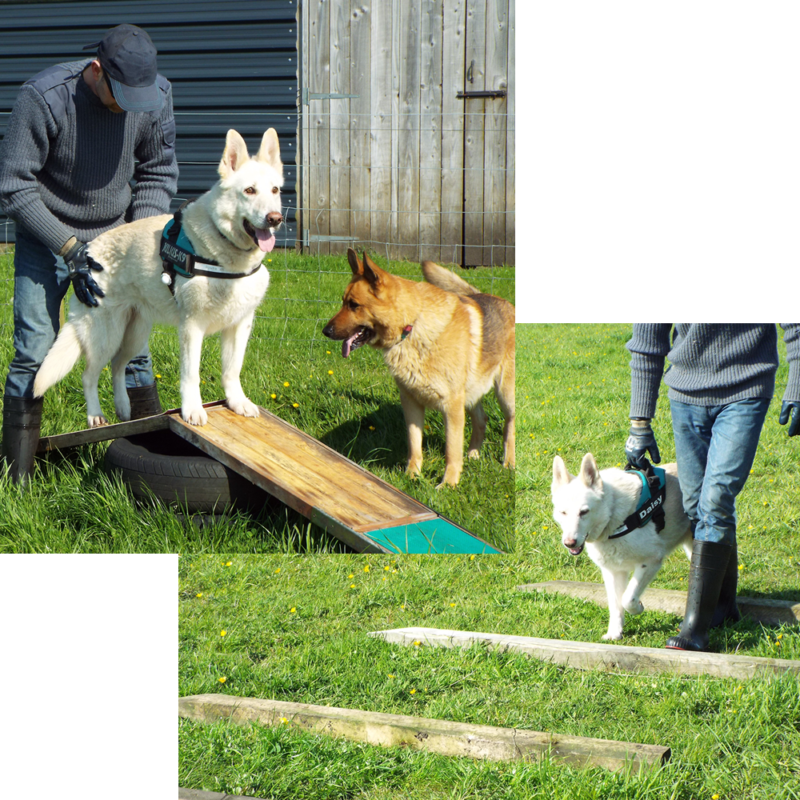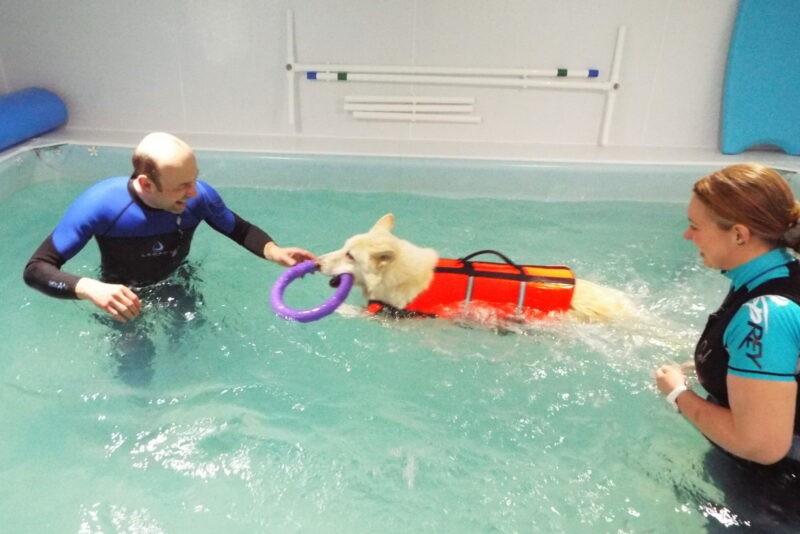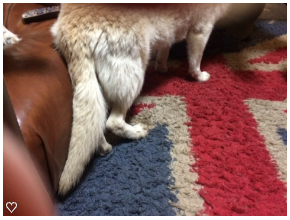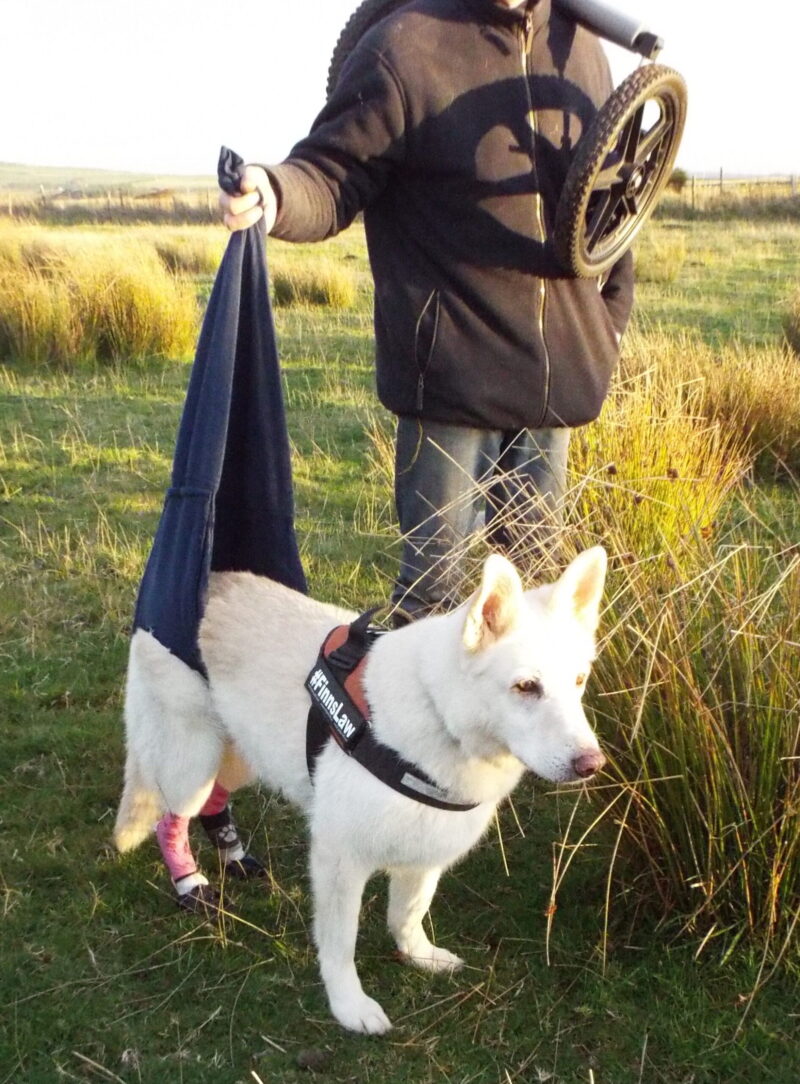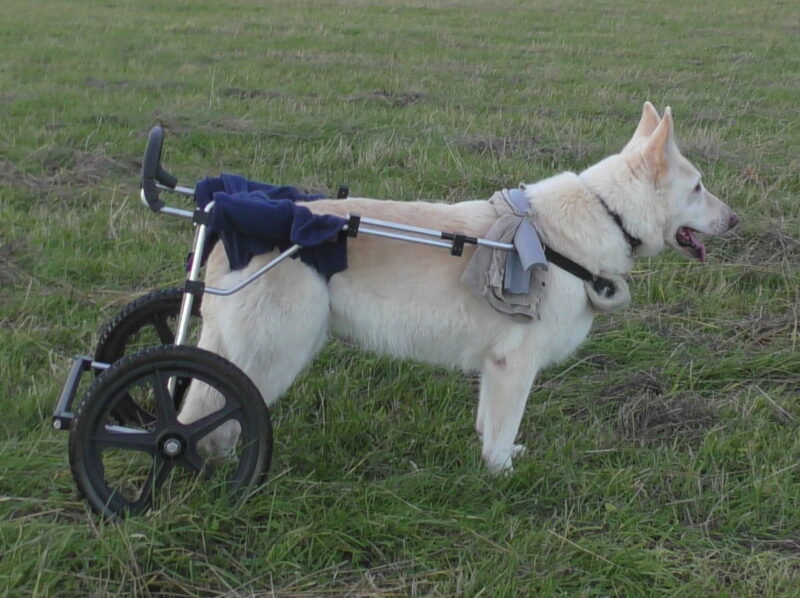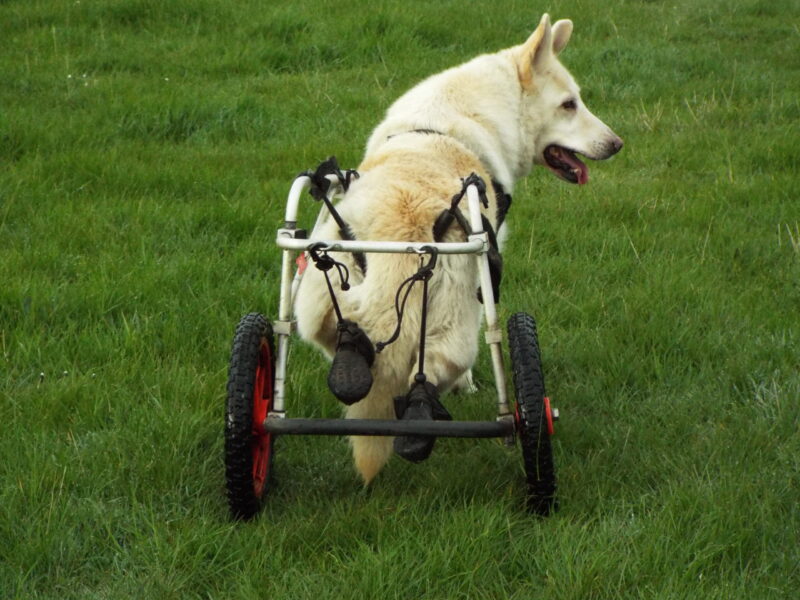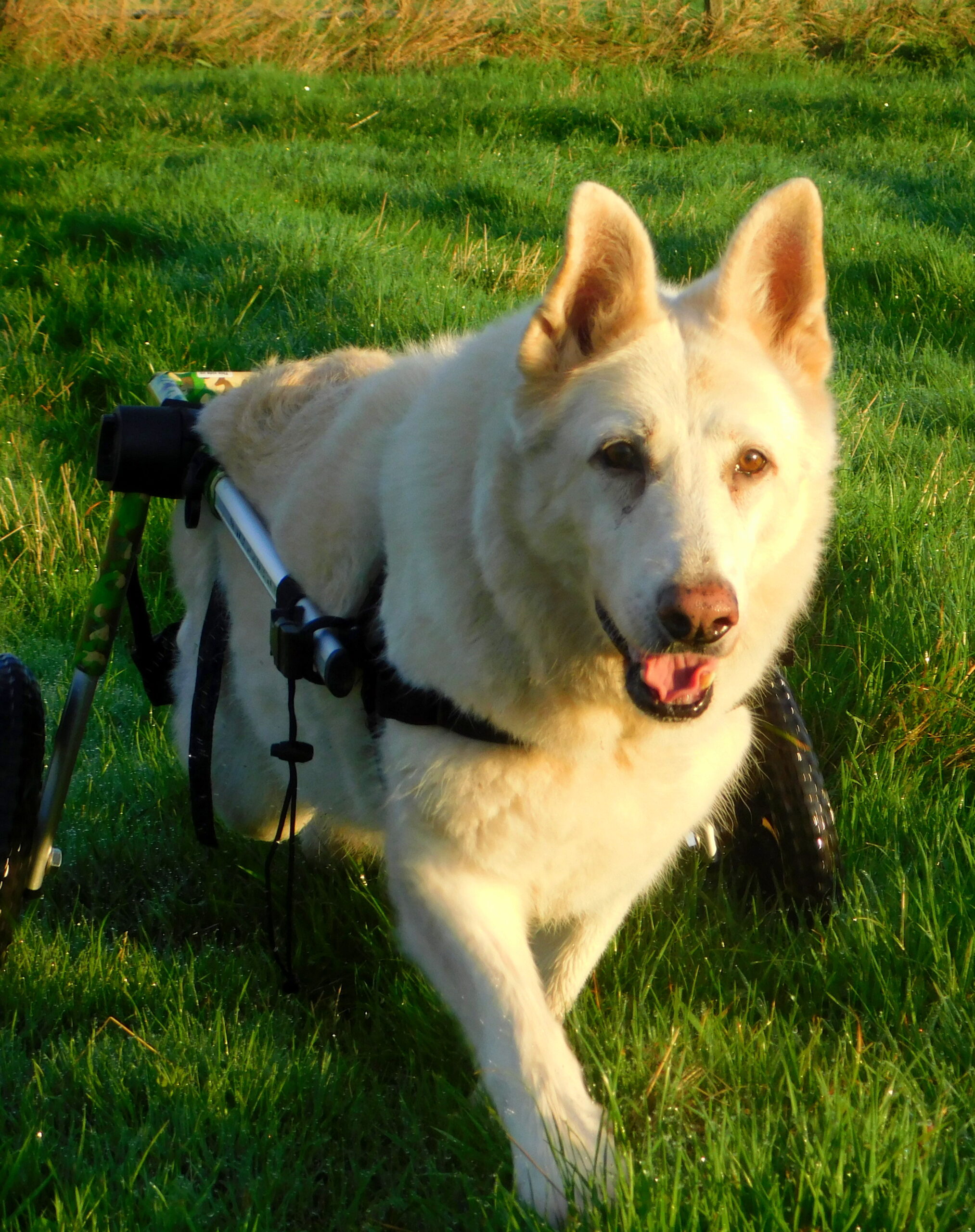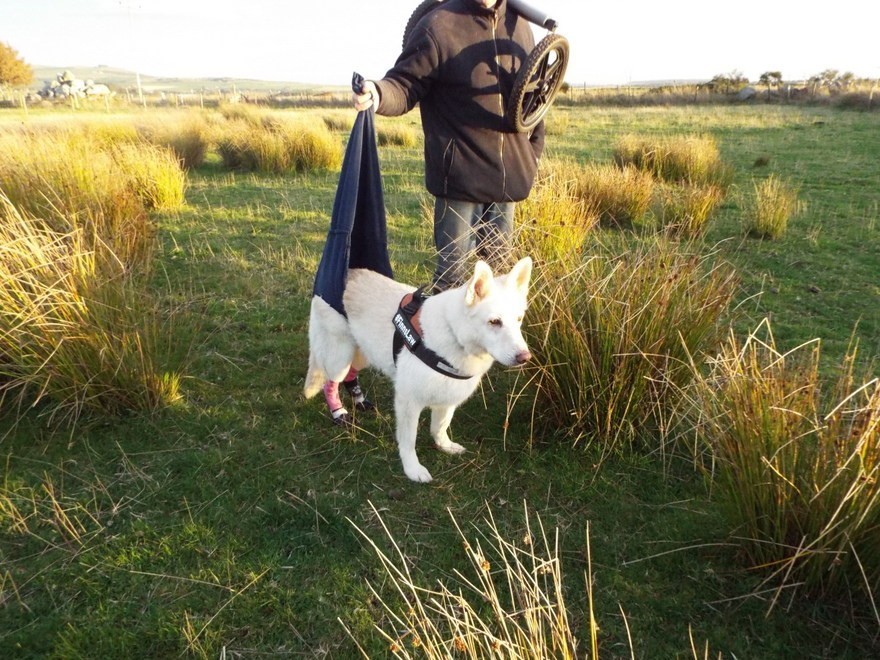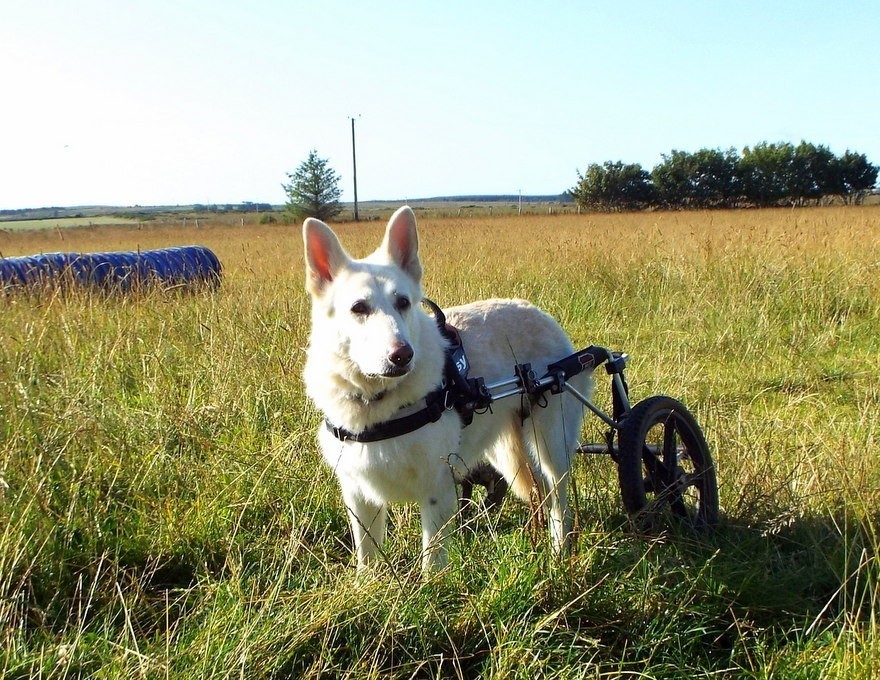Five Things You Should Know Before Buying a Dog Wheelchair
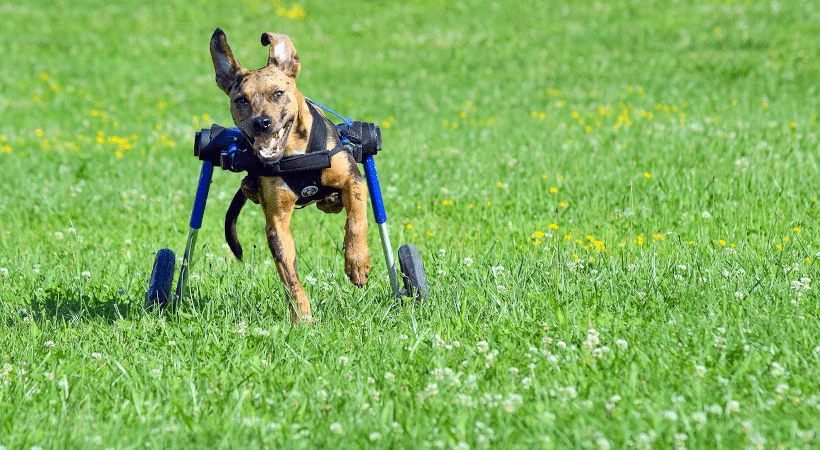
Article originally published on the Walkin’ Pets Blog in April, 2021. Read it here.
Choosing the right dog wheelchair for your pet doesn’t have to be challenging. Want to become a dog wheelchair expert? Here are five things you need to know before buying a dog wheelchair.
1. How Dog Wheelchairs Work
The Walkin’ Wheels dog wheelchair is designed to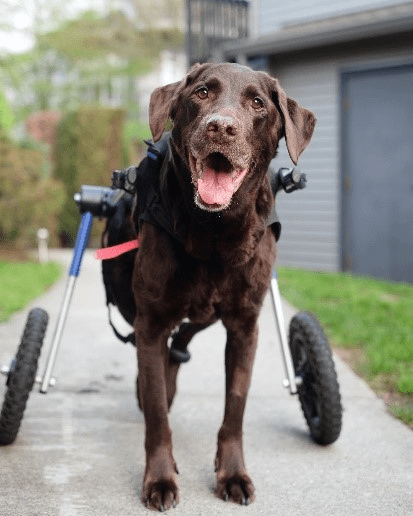 help your senior or disabled pet get back on their feet. So, your pet can exercise and get back to what’s important, enjoying their family.
help your senior or disabled pet get back on their feet. So, your pet can exercise and get back to what’s important, enjoying their family.
It’s never too early to get your dog a wheelchair. If your dog is stumbling, losing its balance, or tiring easily it’s time to consider a wheelchair. It’s true that many wheelchair dogs are paralyzed or suffer a traumatic injury but, that’s not the case with every dog. Many wheelchair dogs still walk on all four paws and even stand on their own. The Walkin’ Wheels provides support, allowing your dog to stand upright and get the exercise they so desperately need. Even dogs that can still move their back legs, benefit from using a wheelchair!
Older dogs who tire easily on long walks or whose joints ache from arthritis or hip dysplasia can greatly benefit from a wheelchair. The wheelchair supports them from underneath, relieving the stress on their joints which allows your dog to walk with ease! How your dog uses their wheelchair is up to you! Many dogs use the wheelchair every day, while other pets only on days when they need a little extra help.
For dogs recovering from injury or surgery, the Walkin’ Wheels can help them get back on their feet faster. A wheelchair can even be a wonderful addition to your dog’s rehabilitation program!
Wheelchairs Help Dogs With:
- Hip Dysplasia
- Arthritis
- Paralysis
- Degenerative Myelopathy or DM
- IVDD
- Neurological Issues
- Surgical Recovery
- Injuries
- Improve Balance and Stability
2. Choosing the Right Wheelchair for Your Dog
Choosing the right cart for your dog can be overwhelming. How do you know if a dog wheelchair is the right choice for your pet? Luckily, the first step is an easy one, a simple test to help determine if your dog is a good candidate for a wheelchair.
To determine the level of support your dog needs, try this simple towel test:
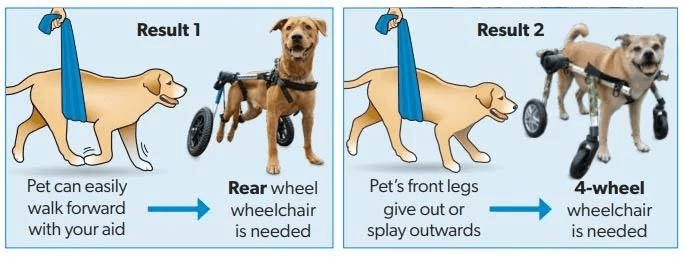
Rear Dog Wheelchairs
Rear support wheelchairs are ideal for pets with hind leg weakness, injury or paralysis. The rear wheelchair supports your dog from underneath, providing balance and stability. This allows your dog to stand, walk, run and play again! Pets with completely paralyzed rear legs can use the stirrups to elevate your dog’s rear paws safely off the ground, preventing injury caused by scraping or dragging feet.
Full Support Wheelchair
A four-wheel or quad wheelchair is perfect for dogs who are experiencing weakened limbs in the front and back legs. Your dog’s front legs must be strong enough to drive and steer their quad wheelchair. The Full Support wheelchair is a great option for dogs with progressive diseases like Degenerative Myelopathy (DM) that will worsen over time.
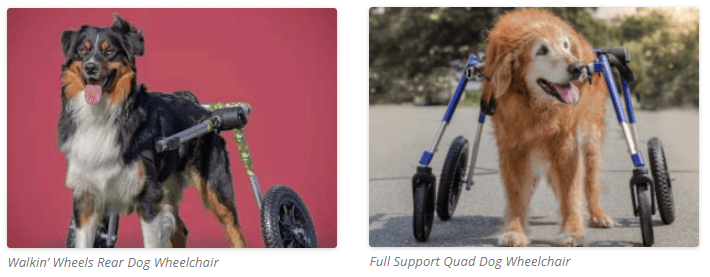
Adjusting to Life on Wheels
The transition into a wheelchair is an easy one for most pets. Dogs want to be moving and they learn quickly that their wheelchair is going to help them. Even dogs who haven’t run in months are so happy to be back on their feet that when using their Walkin’ Wheels for the first time, they take off! The transformation is incredible. You can see the joy in their face as they run for the first time in months.
If your dog doesn’t take off running right away, the wheelchair may just need a few minor adjustments to make them more comfortable. If you’re not sure the wheelchair is set up perfectly, snap a few photos and send them to our Wheelchair Experts to review. With a few tweaks and some encouragement from you, your dog will be running around in no time!
3. Key Wheelchair Features to Consider
Now that you know your dog needs a wheelchair, here are some key wheelchair features to help you select the best dog wheelchair for your pet:
Size
Since dogs come in all shapes and sizes, it’s important to choose one that can be sized to perfectly fit their needs.
The Walkin’ Wheels wheelchair is available in four frame sizes, Mini, Small, Medium and Large. And can accommodate pets as small as 2 lbs. and as large as 180 lbs. The Walkin’ Wheels wheelchair is fully adjustable with adjustments for width, height, and length.

The Walkin’ Wheels wheelchair frame is constructed of lightweight, durable aluminum. It’s light enough for even the smallest dogs to maneuver with ease and durable enough for your dog to hike up a mountain!
Size is especially important when dealing with large breed dogs. Custom carts can be too big or bulky to travel easily with. Some may not even fit into your car! Choose a wheelchair that can fold flat and be easily packed.
Wheels
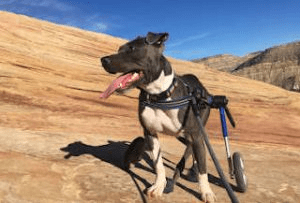
Choosing the right wheels can be tough. Air tires or foam wheels? Both wheel styles work well and are great for different reasons. You want to select the wheel that’s the right fit for your (and your pup’s) lifestyle!
Foam Wheels: By far the most popular wheel type! They are made of dense, rugged foam and are very durable. These wheels can’t be punctured and will never go flat. They are also durable enough to take on any terrain.
Air-Filled Tires: provide a more natural suspension and are great for active dogs that like to run, hike and navigate over rougher terrain.
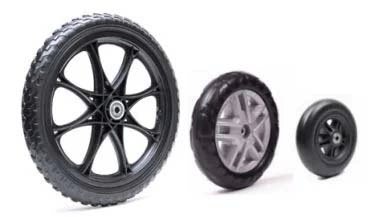
Benefits of a Fully Adjustable Wheelchair

A fully adjustable wheelchair is going to be more versatile. And you might be able to use it for multiple dogs.
The Walkin’ Wheels features push-button adjustability, allowing you to easily adjust the height, length and width, allowing you to fine-tune the size to perfectly fit your dog! An adjustable wheelchair gives your dog a customized fit without the custom price.
Will it Adapt to Fit Your Dog’s Needs?
Often mobility loss begins with weakness in a dog’s rear legs and as the condition progresses the dog’s mobility worsens over time. In many cases, the weakness slowly works its way up the spine and eventually impacts the front leg strength as well. To ensure that your dog continues to get the support they need, choose a wheelchair that can adapt as your dog’s mobility and health needs change.
The Walkin’ Wheels wheelchair is designed to adapt to your dog’s changing health needs. It easily converts from a rear-wheel wheelchair into a full support four-wheel wheelchair, giving your dog support in both the front and rear legs when they need it.
4. Can My Dog Go to the Bathroom in a Wheelchair?
Yes, your dog can relieve themselves while using their Walkin’ Wheels! Both male and female pets can pee and poop freely while using their wheelchair.
Rear leg rings support your pet from underneath and are positioned for your pet to comfortably relieve themselves. For dogs with a long tail, simply place your dog’s tail over the back bar of the wheelchair to keep it from being soiled.
Not only can they go to the bathroom while using their Walkin’ Wheels, but it may help them to go! Injured and disabled dogs tend to be less active which can impact their internal functions. Once they are in their wheelchair, they are standing upright and moving more. This encourages their body to function correctly and relieve themselves more naturally.
5. Wheelchairs Aren’t Just for Dogs Anymore!
There was a time not too long ago when it might have seemed odd to see a dog in a wheelchair, but that’s not the case anymore! Now more than ever, pets are family! Pet parents around the world are willing to go above and beyond to help their fur babies.
Wheelchairs are recommended and commonly prescribed by pet care professionals for countless mobility issues and conditions. They’ve become a key component in animal rehabilitation and treatment. And the pet mobility movement has spread far beyond dogs. All different kinds of animals have used the Walkin’ Wheels wheelchair, including cats, rabbits, sheep, goats, ducks, chickens, turtles and even a raccoon.
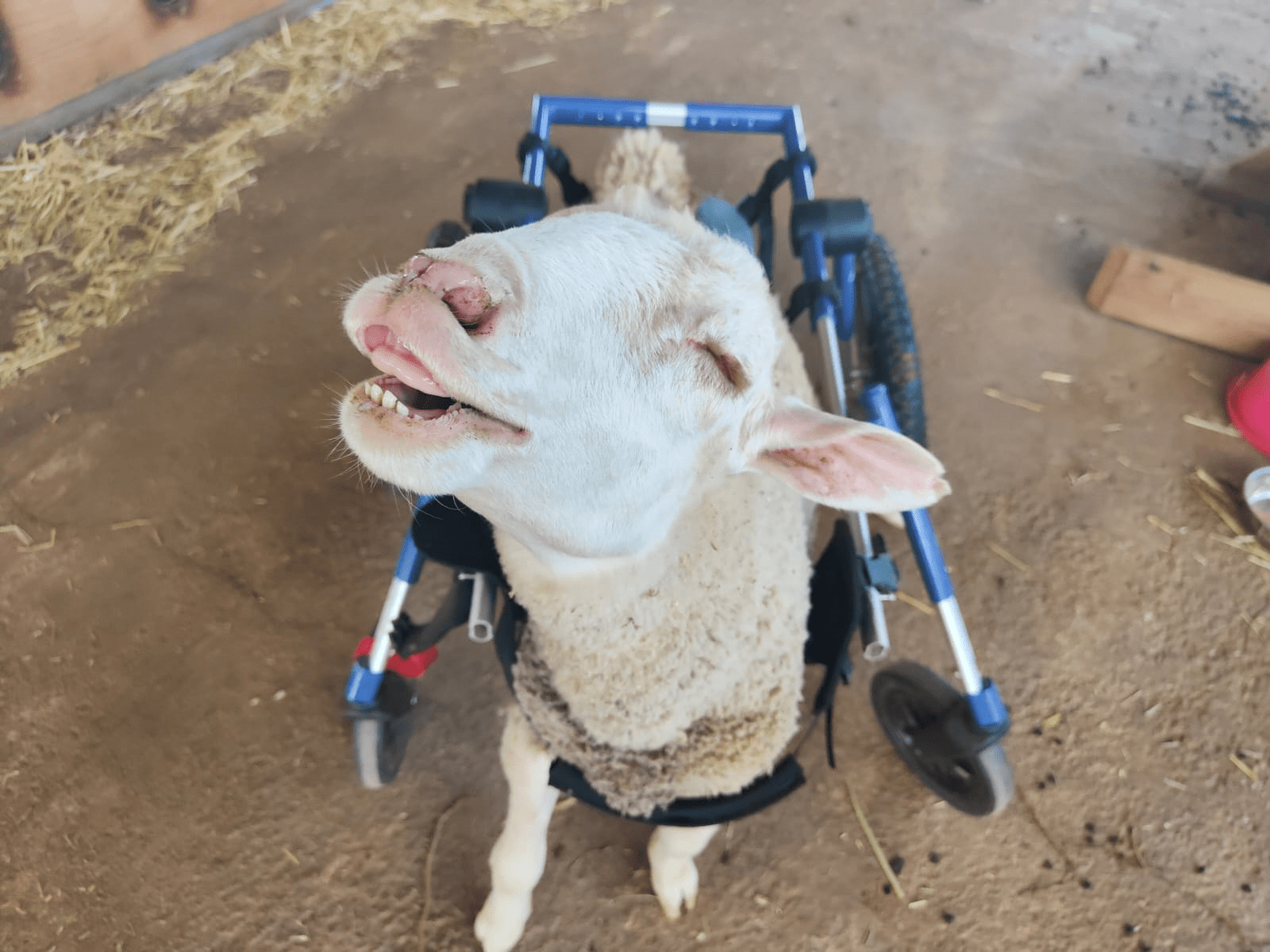
A very happy sheep
We often have second-hand wheelchairs available for sale.
Still have questions? We’re here to help! Contact us at Training Lines.
Dogs Enjoying Life with Walkin’ Wheels

Many thanks to Guest Author: Dr. Sarah J. Wooten DVM, CVJ
Dr. Sarah J. Wooten DVM, CVJ is a small animal veterinarian, writer, public speaker, and established leader in veterinary medicine. Her passion is writing and speaking from the heart on client communication and service.


